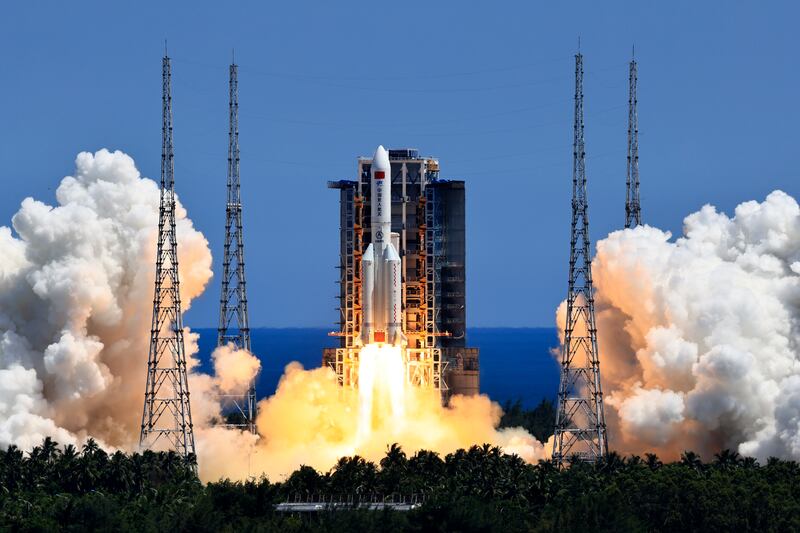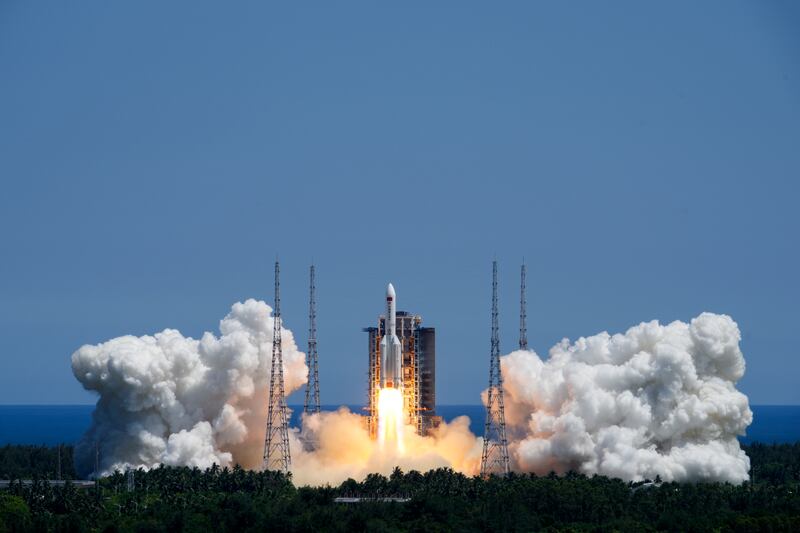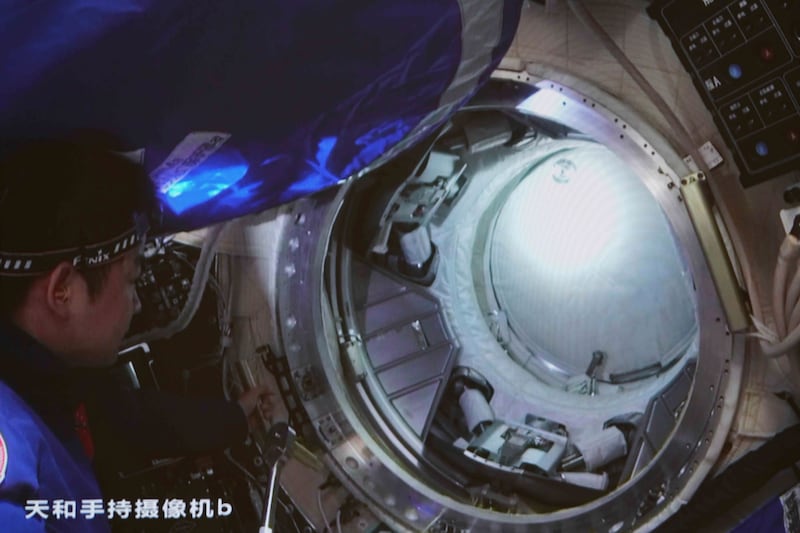Remnants of a Chinese rocket fell back to Earth last night, after an uncontrolled re-entry over the Indian Ocean.
This was debris from the Long March 5B rocket, China’s largest, which carried the Wentian space station module into orbit on July 24.
The pieces fell into the Sulu Sea, the south-western area of the Philippines.
Most of the debris from the rocket’s 22 tonne core stage is likely to have burned up in space, but up to 40 per cent could have survived re-entry, especially larger parts of the rocket.
Social media users in Malaysia shared video of what could have been the wreckage burning as it re-entered the atmosphere. The footage quickly went viral.
Nasa administrator Bill Nelson criticised China for not sharing a trajectory of the rocket debris.
“The People’s Republic of China did not share specific trajectory information as their Long March 5B rocket fell back to Earth,” he said.
“All spacefaring nations should follow established best practices, and do their part to share this type of information in advance to allow reliable predictions of potential debris impact risk, especially for heavy-lift vehicles, like the Long March 5B, which carry a significant risk of loss of life and property.
“Doing so is critical to the responsible use of space and to ensure the safety of people here on Earth.”
Last year in May, remnants of another Long March 5B made an uncontrolled re-entry into Earth’s atmosphere and fell into the Indian Ocean.
The event caused anxiety and a sharp rebuke from the US space agency.
The segment that landed near the Maldives was part of the Long March 5B, which carried the first core module of China’s space station into space on April 29.
China is building the Tiangong Space Station in low-Earth orbit, with astronauts already on board.
Currently, astronauts Chen Dong, Liu Yang and Cai Xuhe are on board the Tianhe core module.
Their Shenzou-14 mission is the third crewed journey to the station.
Earlier, three astronauts also spent six months there. They included Wang Yaping, the first Chinese woman to perform a spacewalk.
The latest crew will complete the assembly and construction of Tiangong, expanding it from a single-module structure to a three-module national space laboratory.
This will comprise the Tianhe core module and two laboratory modules, Wentian, which was successfully added recently, and the Mengtian.
Jonathan Mcdowell of the Harvard-Smithsonian Centre for Astrophysics said that another uncontrolled re-entry is likely after a Long March 5B rocket carries the Mengtian module into orbit in October.
“We'll go through this again in October with Chang Zheng 5B Y4, which is scheduled to launch the next Chinese space station module,” he said on Twitter.











